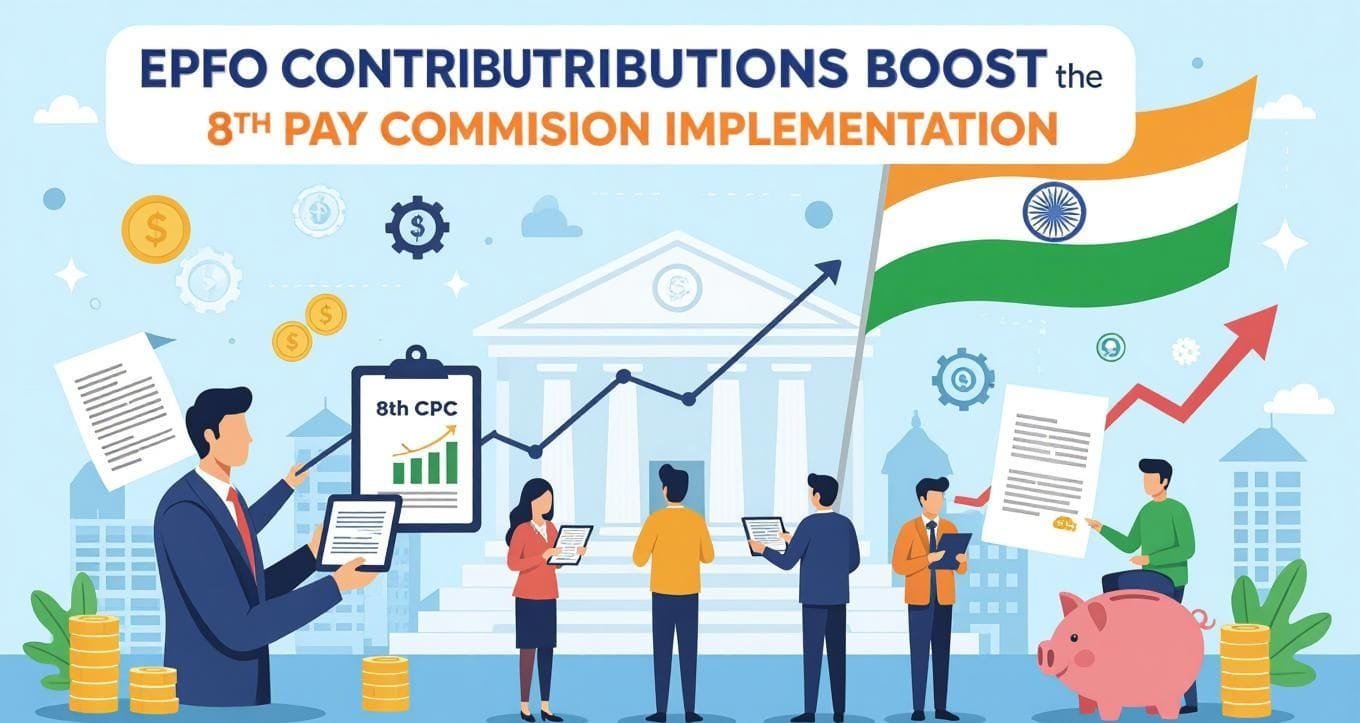New Delhi, September 3, 2025 – As India gears up for the implementation of the 8th Central Pay Commission (CPC) starting January 1, 2026, millions of employees in the organized sector are poised to see notable changes in their provident fund contributions under the Employees’ Provident Fund Organisation (EPFO). While the commission primarily targets revisions in salaries, allowances, and pensions for central government workers, its ripple effects are expected to extend to EPFO-managed funds, potentially increasing contribution amounts and enhancing retirement savings for a broader workforce. This development aligns with ongoing efforts to adjust social security mechanisms in line with rising living costs and wage structures.
The 8th CPC, approved by the Union Cabinet in January 2025, aims to overhaul the pay matrix for nearly 50 lakh central government employees and over 60 lakh pensioners. 43 Delays in finalizing the Terms of Reference have pushed back some announcements, but experts anticipate a fitment factor ranging from 1.8 to 3.0, translating to salary increases of 13% to 34% depending on the final calculations. 30 This would elevate the minimum basic pay from Rs 18,000 to potentially Rs 21,600 or higher, with pensions also seeing upward revisions. 42 The changes are projected to inject Rs 3-3.15 lakh crore into the economy through boosted salaries and pensions, benefiting around 11 million individuals. 23
Linking Pay Revisions to EPFO Enhancements
Although central government employees primarily contribute to the General Provident Fund (GPF) or the National Pension System (NPS) rather than directly to EPFO, the pay commission’s salary hikes have indirect but significant implications for EPFO subscribers. EPFO, which oversees provident funds for over 6 crore members in the private and organized sectors, bases contributions on basic pay plus dearness allowance (DA). A higher salary structure under the 8th CPC could prompt states and public sector undertakings to align their pay scales, leading to increased EPFO deductions at the standard rate of 12% from both employees and employers.
Analysts predict that the commission’s emphasis on inflation-adjusted wages will encourage EPFO to revisit its contribution ceiling, currently capped at Rs 15,000 per month for mandatory contributions. Media reports suggest a potential increase to Rs 21,000, which would allow more employees to build larger retirement corpora through higher tax-free interest earnings. 14 This adjustment, if approved, would particularly benefit lower and middle-income workers by expanding access to the Employees’ Pension Scheme (EPS), where employer contributions are diverted toward lifelong pensions.
In addition, the 8th CPC is likely to influence NPS contributions, which some government employees fall under since 2004. With expected salary boosts of 30-34%, contributions to NPS could rise proportionally, strengthening post-retirement security. 17 Pensioners retiring after the implementation may see their minimum pension jump from Rs 9,000 to Rs 22,500-25,200, further tying into broader social security reforms. 8
Broader Economic and Employee Benefits
The interplay between the 8th CPC and EPFO adjustments is expected to have wide-reaching economic effects. Higher contributions could swell EPFO’s corpus, currently over Rs 20 lakh crore, enabling better investment returns and potentially higher interest rates for subscribers. The current EPFO interest rate stands at 8.25% for FY 2024-25, and an influx of funds from revised salaries might support sustained or improved yields.
For employees, this means enhanced financial stability. A worker earning Rs 50,000 basic pay today could see their monthly EPFO contribution rise by 20-30% post-implementation, assuming aligned pay revisions, leading to compounded growth in savings over time. 19 However, some experts caution that while salaries may increase, the reset of DA to zero upon implementation could temper immediate take-home pay gains, with benefits accruing more in the long term. 15
Challenges remain, including fiscal strain on the government. The total cost of the pay hike is estimated at Rs 1.8 lakh crore annually, potentially impacting budget allocations for other sectors. 20 Additionally, pre-2026 retirees may not fully benefit from the revisions, sparking concerns among pensioner groups. 2 Inflation, a key driver behind pay commissions, will continue to shape these outcomes, as past revisions have shown hikes calibrated to maintain purchasing power. 0
Looking Ahead: A Step Toward Inclusive Growth
As the 8th CPC moves toward full implementation, its synergy with EPFO reforms underscores the government’s commitment to employee welfare amid economic pressures. Union leaders have welcomed the prospects, though they urge swift action on the wage ceiling to maximize benefits for non-government workers. With the commission’s report due soon, stakeholders anticipate clearer guidelines that could redefine retirement planning for India’s workforce.
This evolution not only addresses immediate wage disparities but also fortifies the social security net, ensuring that growth in salaries translates into sustainable savings. As one analyst noted, “The real win is in how these hikes compound over careers, turning modest contributions into robust nest eggs.” For now, employees and pensioners alike await the final notifications, poised for a transformative shift in their financial landscapes.



Average Rating